The 5 Most Successful Botanical Extracts For Hair Examples
In recent years, due to factors such as high life pressure, irregular sleep patterns, and imbalanced intake of nutrients, changes in hormones, cytokines, growth factors, neuropeptides, and immune regulatory systems have led to increased hair loss and white hair, and a trend towards youthfulness [1] [2]. Hair loss, as a skin disease, not only affects the appearance and normal social interaction of patients but also has a significant impact on their mental and spiritual well-being. Clinical hair loss is often treated with biological response regulators and hormone based synthetic drugs, although the treatment effect is obvious, there are still certain shortcomings [3].
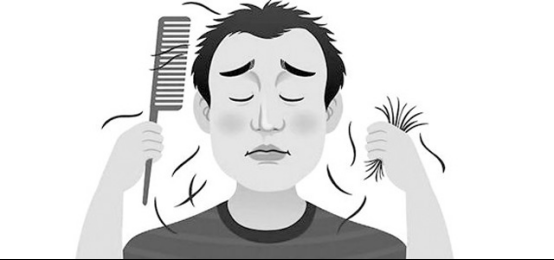
Utilizing natural ingredients extracted from plants can avoid the pollution caused by chemical reagents to the environment and people. At the same time, botanical extracts have the ability to improve the hair skin, promote metabolism, improve blood circulation in the cerebral cortex, and enhance hair quality. In addition, botanical extracts can balance scalp oil, reduce dandruff, treat hair loss, and increase hair luster.
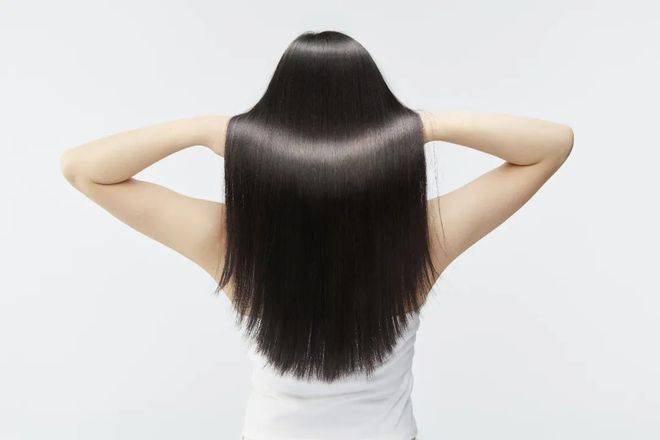
Herbal Botanical Extracts for hair care and treatment of hair loss are one of the valuable legacies of traditional Chinese medicine culture. Many studies have proved the efficacy of topical application of herbal plant extracts for the treatment of alopecia, especially seborrheic alopecia [4][5][7]. Seo et al. [6] conducted a hair growth test on the back of C57BL /6 male mice, and confirmed that botanical extracts such as Ginger extract, Platycladus orientalis leaf extract and Polygonum multiflorum extract had a hair growth effect. Below are the 5 most successful botanical extracts for hair examples.
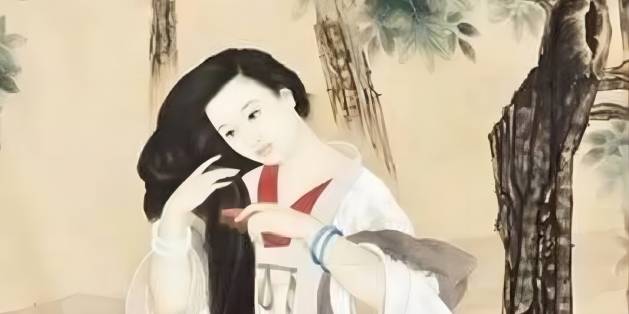
1) Ginger Extract
The main components of ginger extract are gingerenone, gingerol and gingerene and other compounds. In addition, there are a variety of amino acids, with the effect of activating blood circulation and removing blood stasis. When applied to the scalp, ginger extract can promote microvascular blood circulation in the scalp, regulate blood flow, consolidate hair roots, activate hair follicle tissues, and normalize nutrient absorption in the hair roots, thus improving hair loss. In addition, ginger extract can also treat dandruff. In 1987, the World Society of Dermatology determined that the cause of dandruff is closely related to a kind of fungus, and the ether extract of ginger has a significant inhibitory effect on microbial fungi, so it can play a role in the treatment of dandruff [8].
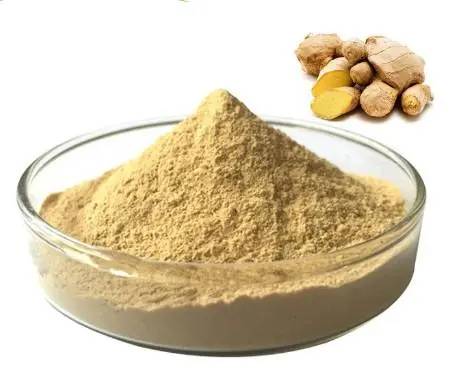
2) Polygonum Multiflorum Extract
The main components of Polygonum multiflorum extract are lecithin, emodin, chrysophanol, and anthraquinone derivatives. Its main functions are anti-aging, improving the immune system, reducing blood lipids and anti atherosclerosis, protecting the myocardium and antibacterial, etc. The anti-aging effect of Polygonum multiflorum Thunb is related to its antioxidant effect. Because the generation and deposition of lipid peroxidation can cause a series of aging symptoms, Polygonum multiflorum extract has a very significant inhibitory effect on the generation of skin lipid peroxides and can be used as a good additive for skin anti-aging cosmetics. Polygonum multiflorum is a traditional hair beauty product, which can nourish hair, provide deep nutrition to hair, and make hair black and beautiful due to its warm nature.
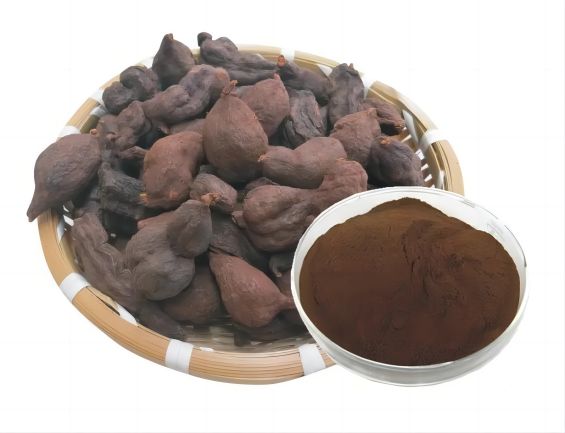
3) Mentha Piperita Extract
The main chemical components of peppermint extract are menthol, menthone, menthol and menthol ester, etc. It also contains isotretinoin, menthol glycosides and a variety of free amino acids, etc. The main component of peppermint extract is peppermint oil. Peppermint oil, the main ingredient in peppermint extract, through the excitation of the central nervous system, so that the skin capillary vasodilatation, accelerates the synthesis of ATP and secretion of sweat glands, and the effect of heat dissipation, so the peppermint oil in the right proportion to add to the shampoo has a better cooling effect, refreshing and wake up the brain, eliminate fatigue. Peppermint extract also has an inhibitory effect on herpes simplex virus, forest virus, Staphylococcus aureus and Staphylococcus albicans. Recent studies have shown that dandruff and itchy hair symptoms are caused by fungal reproduction on the scalp, so the anti-inflammatory and antiseptic effects of peppermint extract can be used in shampoos to inhibit bacterial reproduction, kill some fungi and toxins, and have better efficacy in hair diseases such as dandruff, tinea capitis, itchy head and excessive oil. In addition, the derivatives and complexes of menthol - menthyl salicylate and menthyl o-aminobenzoate have been widely used in new products of the mint series such as hair regenerating essence [10].
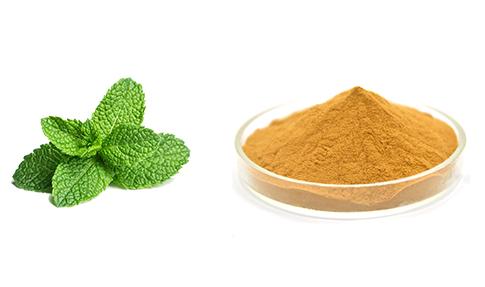
4) Platycladus Orientalis Leaf Extract
Platycladi Cacumen, also known as cypress leaf, flat cypress leaf, and bushy cypress leaf, is the dry tender shoot and leaf of Platycladus orientalis (L.) Franco. The extract of Platycladus orientalis leaves contains flavonoids, flavonol compounds, lipophilic compounds, and polysaccharides from Platycladus orientalis leaves.
Chen Xingfen [11] found that the volatile oil from Platycladus orientalis leaves at a concentration of 0.005 g/mL has a good effect on promoting hair growth. At the same time, studies have shown that the alcohol extract and volatile oil from Platycladus orientalis leaves can play a certain role in alleviating hair loss. Zhao Yongguang et al. [32] believe that the pharmacological effects of total flavonoids from Platycladus orientalis leaves on hair growth are as follows: firstly, the total flavonoids from Platycladus orientalis leaves activate hair mother cells, restore hair follicle vitality, and enable hair follicles with weak growth ability to begin to grow. Secondly, the total flavonoids have the function of accelerating blood circulation and supplementing sufficient nutrients for hair follicles.
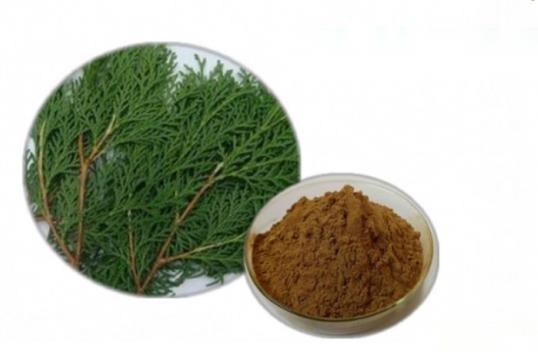
Scientific experimental research has shown that the lipophilic compounds of Platycladus orientalis leaves, such as isobaric enol and red pine lactone, have significant effects on promoting hair growth. Establish a hair loss model using the rosin paraffin hair removal method, and detect the length and weight of newly formed hair in mice, as well as the cytokines VEGF and TNF- α Observe the hair follicle morphology of newly formed hair at a microscopic level. The results showed that the red pine lactone group had a significant effect on the growth of newborn hair length (P<0.01); The groups treated with isoprenol and red pine lactone significantly increased the weight of newly formed hair (P<0.01). Both lipid soluble monomers of Platycladus orientalis and minoxidil significantly increased serum VEGF levels (P<0.01), and TNF in the serum of the group treated with red pine lactone- α The level of insulin significantly increased (P<0.05 or<0.01). The observation results of tissue sections indicate that isoprenol and red pine lactone can enhance the vitality of hair follicles, maintain the normal growth status of hair follicles, and promote hair growth. The mechanism may be related to the content of VEGF in serum.
At the same time, it has been preliminarily confirmed that the compounds isolated from the leaves of Platycladus orientalis, such as the isoprenol group and red pine lactone, can promote cytokines VEGF and TNF- α Its secretion increases hair follicle energy and has the potential to promote hair growth. It is suggested that the isoprenol group and red pine lactone can be used as natural hair growth drugs, providing certain guiding significance for the development of pharmacological effects and clinical application of lateral cypress leaves. However, the potential mechanism by which it promotes hair growth activity still needs further research.
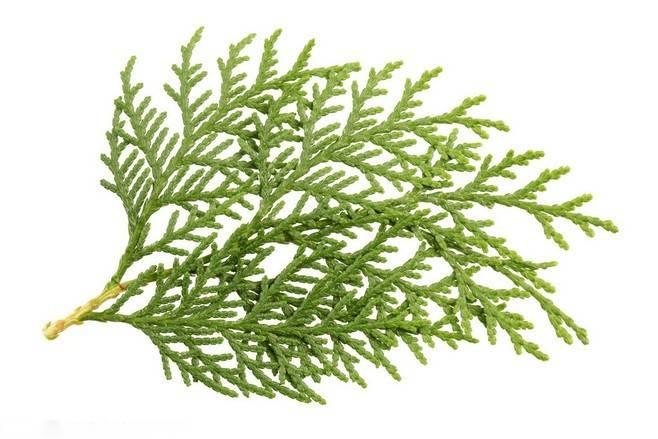
5) Sage Extract
The last successful botanical extracts for hair examples is sage extract. The sage extract contains essential oils, terpenoids, polyphenols and steroids. The sage extract has an inhibitory effect on phosphodiesterase. Phosphodiesterase is the enzyme that converts free fatty acids into esters, and its inhibition means a reduction in the production of fats and oils. In addition, sage extract increases the hydrolysis of fats and oils in the adipose tissue ablation test. According to the above characteristics of sage extract, the appropriate amount added to the shampoo is particularly suitable for oily hair, can be very good oil control and contraction of pores, greasy hair has a suppressive effect, seborrheic alopecia also has a good auxiliary therapeutic effect. Plant phenols contained in sage extract can significantly inhibit infections caused by fungi and molds, so adding it to shampoo can remove dandruff, treat ringworm and itchy scalp, and make hair black and beautiful with long-term use [12].
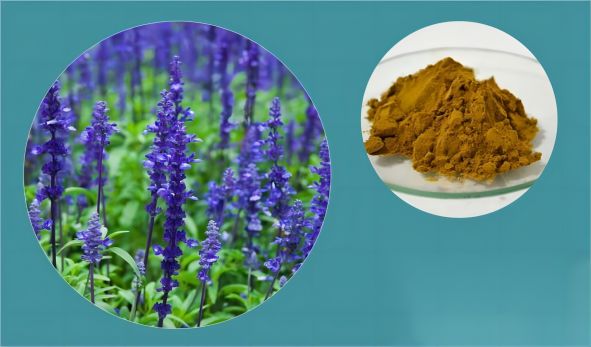
There are many other botanical extracts for hair care, such as tea saponin, bamboo extract and chrysanthemum extract.
However, with the continuous emergence of various new brands of herbal hair care cosmetics, the concept of plant extracts is being continuously abused by many companies, falsely adding plant extracts or using inexpensive and easily available plant extracts as raw materials, deceiving consumers and even jeopardizing their health.

Therefore, the application of botanical extracts must also be based on the system of scientific application. Not only is it necessary to further strengthen the analysis of the efficacy of plant extracts and their mechanism of action research; but also to strengthen the side effects and its safety performance of scientific research. Ensure product safety of advanced extraction processes and technology research. It is believed that in future research and application, plant extracts will better serve mankind with their natural characteristics, good therapeutic effects, high safety and appropriate cost.
References:
[1] Han Xianghui, Li Jingcai. Pathogenesis of Alopecia Areata and New Advances in Preventive and Curative Drugs[j]. Journal of Shenyang Pharmaceutical University, 2001, 18(3):223-227.
[2] Jin Jianbo, Zhang Jianhua. Experimental Models of Hair Loss and the Current Status of Its Pharmacotherapeutics[j]. Chinese Clinical Pharmacology and Therapeutics, 2017,22(1):115-120.
[3] Zhao Zhiran, Chen Zhiqiang, Wang Shenglong, Et Al. Mechanisms and Pharmacologic Advances in Seborrheic Alopecia[j]. Northwest Journal of Pharmacy, 2016,31(4):440-440.
[4] Ren Fang, Wei Yue-Gang. Journal of Zhejiang Chinese Medical, 2012,36(3) : 350-352
[5] Wang Jian-Da ,Yang En-Pin. Yunnan Journal of Traditional Chinese Medicine and Materia Medica,2009,30 (7 ) : 69-70
[6]Seo S R , Kang G, Ha J W, Kim J C.Journal of Industrial and Engineering Chemistry, 2013.19: 1331 -1339 4 Park H J, Zhang N N, Park D K.Journal of Ethnopharmacology, 2011, 135: 369-375
[7]Park H J,Zhang N N,Park D K. Journal of Ethnopharmacology, 2011, 135: 369-375
[8] Liang Xiaoyu, Ke Jingxia. Efficacy and Trial Observation of Supercritical Co2 Ginger Extract in Hair Products[J]. Science of Daily-Use Chemicals, 2006, 29(6) : 25-28 .
[9] Xie Huiying, Chen Baohua, Zhang Jintao. Application Status of Several Plant Extracts in Cosmetics [J]. Flavor and Fragrance Cosmetics, 2012(3) : 50-53 .
[10] Huang Jingbo, Feng Xuehua, Peng Xingyuan, Et Al. Research on the Application of Natural Mint Extract in Shampoo Shampoo Dandruff Removal System [J]. Forestry Construction, 2005(4) : 3-5 .
[11] Chen Xingfen. Extraction of Chemical Constituents and Active Functions of the Leaves of Sideburnia Serrata[d]. Nanjing:Nanjing Normal University,Master's Thesis 2011.
[12] Zhao Yongguang, Zhao Ying, Zhang Jianping, Et Al. Application of Total Flavonoids in Functional Shampoos of Pterocarpus Indicus[j]. Anhui Agricultural Science,2008,36(24):10295-10296.
-
Prev
Botanical Extracts for Cosmetics Sunscreen: A Natural Way to Protect Your Skin
-
Next
The 6 Stunning Anti-aging Botanical Extract Examples


 English
English French
French Spanish
Spanish Russian
Russian Korean
Korean Japanese
Japanese



